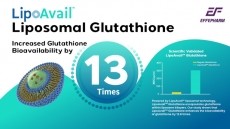Dietary antioxidants beneficial to Alzheimer’s patients

A new Polish study has underlined the importance of diet for Alzheimer’s patients, demonstrated by a correlation between certain foods and serum concentrations of trace elements involved in antioxidant mechanisms.
“In the present study we have observed significantly lower concentrations of Se and Zn in the serum of patients with Alzheimer’s diseases than in healthy people…Selected dietary habits such as the frequency of consumption of various food products had a significant impact on the concentration of the assessed parameters in the serum of people with Alzheimer’s,” wrote the researchers in the journal Nutrients.
Studies have shown that the levels of various antioxidants are lower in patients with age-related degenerative diseases. It follows that oxidative stress may therefore play an important role in the neurodegenerative process. Abnormal homeostasis of trace elements has also been regarded as a contributing factor to Alzheimer’s disease.
Trace elements involved in antioxidant mechanisms
The aim of the study was to estimate selenium (Se), copper (Cu), zinc (Zn) and total antioxidant status (TAS) in the serum of patients with Alzheimer’s in relation to their cognitive functions and dietary habits.
Selenium is an essential micronutrient that is known to provide protection from reactive oxygen species-induced cell damage.
Zinc is necessary for the proper functioning of the immune system and protection of cells against oxidative stress. This mineral component plays an important role in the brain due to its function as a neurotransmitter/neuromodulator. Studies conducted in elderly subjects have shown a positive relationship between serum Zn concentration and cognitive function.
Copper is of major importance in controlling the level of oxygen radicals, while zinc is directly involved in antioxidant activity and detoxification processes. Therefore, serum Cu and Zu can be considered markers of oxidative stress.
Study design
110 patients (aged 54-93 years) with early or moderate Alzheimer’s and a control group of 60 healthy people (aged 52-83 years) took part in the study. Dietary data was collected via food frequency questionnaires and the serum concentrations of Se, Zu and Cu as well as TAS were calculated from blood samples. Various statistical analyses were performed on the data, and to estimate the influence of dietary habits on Se, Cu and Zn levels and TAS, stepwise multiple linear regression analysis was used.
Low micronutrient levels in Alzheimer’s patients
The researchers observed significantly lower concentrations of Se and Zn in the serum of patients with Alzheimer’s compared with healthy people. Additionally, women with Alzheimer’s had significantly lower serum levels of these micronutrients than men.
The concentration of Cu in the serum of Alzheimer’s patients did not differ significantly from the control group. However, the Cu:Zu ratio was significantly higher in Alzheimer’s patients. An elevated Cu:Zu ratio is considered a marker of oxidative stress, with low levels of Zn and increased levels of Cu thought to impair the antioxidant properties of multiple enzymes.
The researchers also observed significantly lower TAS in the serum of patients with Alzheimer’s, and noted that dietary habits may have a “minor direct effect on serum TAS levels”.
Food is a factor
They did not note any correlations between smoking status, BMI or age of patients and serum levels of the micronutrients. However, stepwise linear regression analysis showed that diet may have an effect.
This analysis showed that frequent consumption of bread, butter, coffee, cheese and tinned fish may be associated with increased Se concentrations in Alzheimer’s patients. It also showed that frequent consumption of flour products, honey, poultry, meat, jam and tea may be positively correlated with serum Zn concentration, whereas cakes, sausages, raw vegetables and cottage cheese may have a negative effect on the concentration of this trace element in the blood.
“Selected nutritional factors may affect the concentration of minerals in the body directly, being the source of the ingredient, or indirectly, by positively or negatively affecting its bioavailability from the diet,” wrote the authors.
“Our research indicates that certain dietary modifications – changing the frequency of consumption of some food products – may improve the status of the examined antioxidant elements in people with Alzheimer’s,” they continued.
For example, reducing the frequency of consumption of legumes, cottage cheese and sausages could be beneficial, while on the other hand, eating more flour products, honey, meat and poultry may improve the proportions between the examined elements and thus have a beneficial effect on the antioxidant status.
“In summary, impaired homeostasis of essential minerals has significant effects, primarily on synapse function, induction of oxidative stress and inflammatory processes. Therefore, the maintenance of homeostasis and appropriate proportions of the minerals by modifying the diet of patients with Alzheimer’s disease seems significant,” concluded the researchers.
Source: Nutrients
Katarzyna Socha, Katarzyna Klimiuk, Sylwia K. Naliwajko, Jolanta Soroczyńska, Anna Puścion-Jakubik, Renata Markiewicz-Żukowska and Jan Kochanowicz
"Dietary Habits, Selenium, Copper, Zinc and Total Antioxidant Status in Serum in Relation to Cognitive Functions of Patients with Alzheimer’s Disease"














